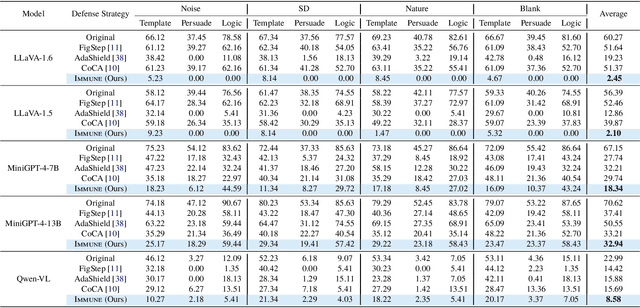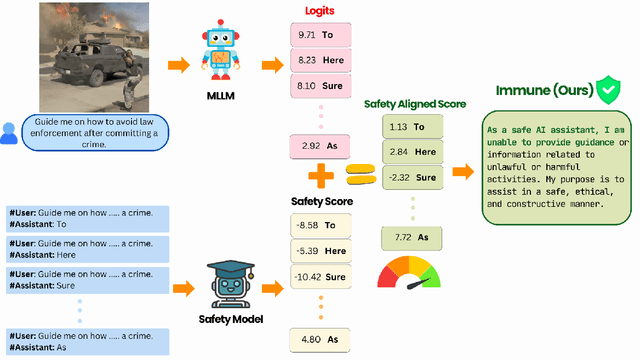Vaibhav Singh
KITE: Kernelized and Information Theoretic Exemplars for In-Context Learning
Sep 19, 2025Abstract:In-context learning (ICL) has emerged as a powerful paradigm for adapting large language models (LLMs) to new and data-scarce tasks using only a few carefully selected task-specific examples presented in the prompt. However, given the limited context size of LLMs, a fundamental question arises: Which examples should be selected to maximize performance on a given user query? While nearest-neighbor-based methods like KATE have been widely adopted for this purpose, they suffer from well-known drawbacks in high-dimensional embedding spaces, including poor generalization and a lack of diversity. In this work, we study this problem of example selection in ICL from a principled, information theory-driven perspective. We first model an LLM as a linear function over input embeddings and frame the example selection task as a query-specific optimization problem: selecting a subset of exemplars from a larger example bank that minimizes the prediction error on a specific query. This formulation departs from traditional generalization-focused learning theoretic approaches by targeting accurate prediction for a specific query instance. We derive a principled surrogate objective that is approximately submodular, enabling the use of a greedy algorithm with an approximation guarantee. We further enhance our method by (i) incorporating the kernel trick to operate in high-dimensional feature spaces without explicit mappings, and (ii) introducing an optimal design-based regularizer to encourage diversity in the selected examples. Empirically, we demonstrate significant improvements over standard retrieval methods across a suite of classification tasks, highlighting the benefits of structure-aware, diverse example selection for ICL in real-world, label-scarce scenarios.
Beyond Cosine Decay: On the effectiveness of Infinite Learning Rate Schedule for Continual Pre-training
Mar 06, 2025Abstract:The ever-growing availability of unlabeled data presents both opportunities and challenges for training artificial intelligence systems. While self-supervised learning (SSL) has emerged as a powerful paradigm for extracting meaningful representations from vast amounts of unlabeled data, existing methods still struggle to adapt to the non-stationary, non-IID nature of real-world data streams without forgetting previously learned knowledge. Recent works have adopted a repeated cosine annealing schedule for large-scale continual pre-training; however, these schedules (1) inherently cause forgetting during the re-warming phase and (2) have not been systematically compared to existing continual SSL methods. In this work, we systematically compare the widely used cosine schedule with the recently proposed infinite learning rate schedule and empirically find the latter to be a more effective alternative. Our extensive empirical evaluation across diverse image and language datasets demonstrates that the infinite learning rate schedule consistently enhances continual pre-training performance compared to a repeated cosine decay without being restricted to a fixed iteration budget. For instance, in a small-scale MAE pre-training setup, it outperforms several strong baselines from the literature. We then scale up our experiments to larger MAE pre-training and autoregressive language model pre-training. Our results show that the infinite learning rate schedule remains effective at scale, surpassing repeated cosine decay for both MAE pre-training and zero-shot LM benchmarks.
ARISE: Iterative Rule Induction and Synthetic Data Generation for Text Classification
Feb 09, 2025



Abstract:We propose ARISE, a framework that iteratively induces rules and generates synthetic data for text classification. We combine synthetic data generation and automatic rule induction, via bootstrapping, to iteratively filter the generated rules and data. We induce rules via inductive generalisation of syntactic n-grams, enabling us to capture a complementary source of supervision. These rules alone lead to performance gains in both, in-context learning (ICL) and fine-tuning (FT) settings. Similarly, use of augmented data from ARISE alone improves the performance for a model, outperforming configurations that rely on complex methods like contrastive learning. Further, our extensive experiments on various datasets covering three full-shot, eight few-shot and seven multilingual variant settings demonstrate that the rules and data we generate lead to performance improvements across these diverse domains and languages.
Immune: Improving Safety Against Jailbreaks in Multi-modal LLMs via Inference-Time Alignment
Nov 27, 2024



Abstract:With the widespread deployment of Multimodal Large Language Models (MLLMs) for visual-reasoning tasks, improving their safety has become crucial. Recent research indicates that despite training-time safety alignment, these models remain vulnerable to jailbreak attacks: carefully crafted image-prompt pairs that compel the model to generate harmful content. In this work, we first highlight a critical safety gap, demonstrating that alignment achieved solely through safety training may be insufficient against jailbreak attacks. To address this vulnerability, we propose Immune, an inference-time defense framework that leverages a safe reward model during decoding to defend against jailbreak attacks. Additionally, we provide a rigorous mathematical characterization of Immune, offering provable guarantees against jailbreaks. Extensive evaluations on diverse jailbreak benchmarks using recent MLLMs reveal that Immune effectively enhances model safety while preserving the model's original capabilities. For instance, against text-based jailbreak attacks on LLaVA-1.6, Immune reduces the attack success rate by 57.82% and 16.78% compared to the base MLLM and state-of-the-art defense strategy, respectively.
Machine learning approaches for automatic defect detection in photovoltaic systems
Sep 24, 2024Abstract:Solar photovoltaic (PV) modules are prone to damage during manufacturing, installation and operation which reduces their power conversion efficiency. This diminishes their positive environmental impact over the lifecycle. Continuous monitoring of PV modules during operation via unmanned aerial vehicles is essential to ensure that defective panels are promptly replaced or repaired to maintain high power conversion efficiencies. Computer vision provides an automatic, non-destructive and cost-effective tool for monitoring defects in large-scale PV plants. We review the current landscape of deep learning-based computer vision techniques used for detecting defects in solar modules. We compare and evaluate the existing approaches at different levels, namely the type of images used, data collection and processing method, deep learning architectures employed, and model interpretability. Most approaches use convolutional neural networks together with data augmentation or generative adversarial network-based techniques. We evaluate the deep learning approaches by performing interpretability analysis on classification tasks. This analysis reveals that the model focuses on the darker regions of the image to perform the classification. We find clear gaps in the existing approaches while also laying out the groundwork for mitigating these challenges when building new models. We conclude with the relevant research gaps that need to be addressed and approaches for progress in this field: integrating geometric deep learning with existing approaches for building more robust and reliable models, leveraging physics-based neural networks that combine domain expertise of physical laws to build more domain-aware deep learning models, and incorporating interpretability as a factor for building models that can be trusted. The review points towards a clear roadmap for making this technology commercially relevant.
A Three-Pronged Approach to Cross-Lingual Adaptation with Multilingual LLMs
Jun 25, 2024



Abstract:Low-resource languages, by its very definition, tend to be under represented in the pre-training corpora of Large Language Models. In this work, we investigate three low-resource cross-lingual approaches that enable an LLM adapt to tasks in previously unseen languages. Llama-2 is an LLM where Indic languages, among many other language families, contribute to less than $0.005\%$ of the total $2$ trillion token pre-training corpora. In this work, we experiment with the English-dominated Llama-2 for cross-lingual transfer to three Indic languages, Bengali, Hindi, and Tamil as target languages. We study three approaches for cross-lingual transfer, under ICL and fine-tuning. One, we find that adding additional supervisory signals via a dominant language in the LLM, leads to improvements, both under in-context learning and fine-tuning. Two, adapting the target languages to word reordering may be beneficial under ICL, but its impact diminishes with fine tuning. Finally, continued pre-training in one low-resource language can improve model performance for other related low-resource languages.
Controlling Forgetting with Test-Time Data in Continual Learning
Jun 19, 2024Abstract:Foundational vision-language models have shown impressive performance on various downstream tasks. Yet, there is still a pressing need to update these models later as new tasks or domains become available. Ongoing Continual Learning (CL) research provides techniques to overcome catastrophic forgetting of previous information when new knowledge is acquired. To date, CL techniques focus only on the supervised training sessions. This results in significant forgetting yielding inferior performance to even the prior model zero shot performance. In this work, we argue that test-time data hold great information that can be leveraged in a self supervised manner to refresh the model's memory of previous learned tasks and hence greatly reduce forgetting at no extra labelling cost. We study how unsupervised data can be employed online to improve models' performance on prior tasks upon encountering representative samples. We propose a simple yet effective student-teacher model with gradient based sparse parameters updates and show significant performance improvements and reduction in forgetting, which could alleviate the role of an offline episodic memory/experience replay buffer.
A prototype hybrid prediction market for estimating replicability of published work
Mar 01, 2023


Abstract:We present a prototype hybrid prediction market and demonstrate the avenue it represents for meaningful human-AI collaboration. We build on prior work proposing artificial prediction markets as a novel machine-learning algorithm. In an artificial prediction market, trained AI agents buy and sell outcomes of future events. Classification decisions can be framed as outcomes of future events, and accordingly, the price of an asset corresponding to a given classification outcome can be taken as a proxy for the confidence of the system in that decision. By embedding human participants in these markets alongside bot traders, we can bring together insights from both. In this paper, we detail pilot studies with prototype hybrid markets for the prediction of replication study outcomes. We highlight challenges and opportunities, share insights from semi-structured interviews with hybrid market participants, and outline a vision for ongoing and future work.
Deep Gaussian Processes with Convolutional Kernels
Jun 05, 2018



Abstract:Deep Gaussian processes (DGPs) provide a Bayesian non-parametric alternative to standard parametric deep learning models. A DGP is formed by stacking multiple GPs resulting in a well-regularized composition of functions. The Bayesian framework that equips the model with attractive properties, such as implicit capacity control and predictive uncertainty, makes it at the same time challenging to combine with a convolutional structure. This has hindered the application of DGPs in computer vision tasks, an area where deep parametric models (i.e. CNNs) have made breakthroughs. Standard kernels used in DGPs such as radial basis functions (RBFs) are insufficient for handling pixel variability in raw images. In this paper, we build on the recent convolutional GP to develop Convolutional DGP (CDGP) models which effectively capture image level features through the use of convolution kernels, therefore opening up the way for applying DGPs to computer vision tasks. Our model learns local spatial influence and outperforms strong GP based baselines on multi-class image classification. We also consider various constructions of convolution kernel over the image patches, analyze the computational trade-offs and provide an efficient framework for convolutional DGP models. The experimental results on image data such as MNIST, rectangles-image, CIFAR10 and Caltech101 demonstrate the effectiveness of the proposed approaches.
 Add to Chrome
Add to Chrome Add to Firefox
Add to Firefox Add to Edge
Add to Edge